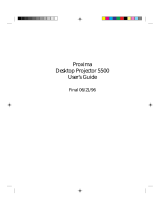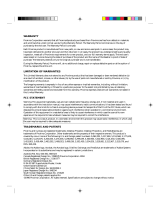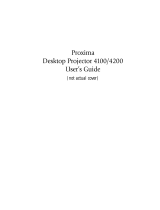Contents
Chapter 1
Your LCD Panel
Quick Start............................................................................1–3
Connecting the Projection Panel....................................1–5
Software.................................................................................1–6
Accessories .............................................................................1–6
Connector Panel....................................................................2–2
Power Connection.................................................................2–3
Computer Video Connection ................................................2–3
Desktop Computers .......................................................2–4
Laptop Computers .........................................................2–6
Monitor Connections ............................................................2–7
CYCLOPS
®
Connection .......................................................2–8
Serial Port Connection (To Panel).........................................2–9
Video Connections ................................................................2–9
S-VHS Video Connection............................................2–10
Audio Connections..............................................................2–11
Stereo AUDIO IN .......................................................2–11
Mono AUDIO IN .......................................................2–12
Audio Follow ...............................................................2–12
AUDIO OUT..............................................................2–13
Powering Up .........................................................................3–1
Control Panel ........................................................................3–2
The Remote Control .............................................................3–3
Operating the Projection Panel..............................................3–5
The Control Panel and Remote Control ........................3–5
Using a Microsoft-Compatible Mouse ...........................3–5
Operating Modes ...........................................................3–6
Chapter 2
Setting Up the
Projection Panel
Chapter 3
Using the
Projection Panel























